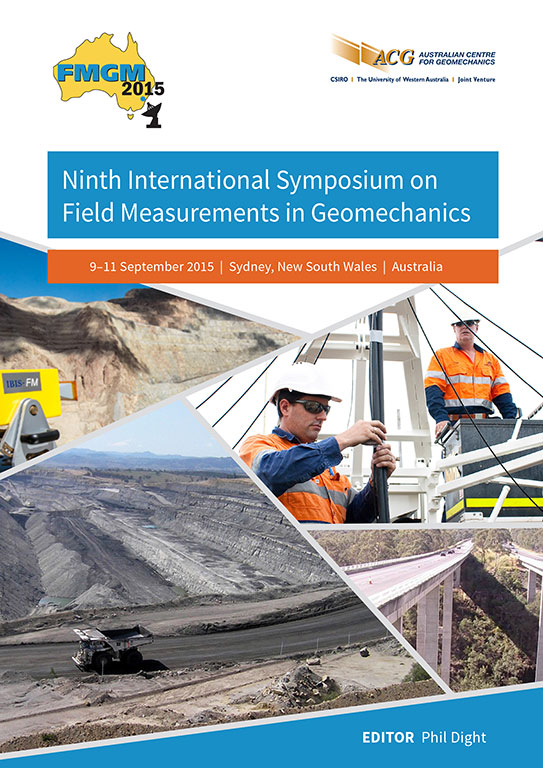Thermomechanical errors in a horizontal in-place inclinometer

|
Authors: Clarke, SJ |
DOI https://doi.org/10.36487/ACG_rep/1508_22_Clarke
Cite As:
Clarke, SJ 2015, 'Thermomechanical errors in a horizontal in-place inclinometer', in PM Dight (ed.), FMGM 2015: Proceedings of the Ninth Symposium on Field Measurements in Geomechanics, Australian Centre for Geomechanics, Perth, pp. 353-364, https://doi.org/10.36487/ACG_rep/1508_22_Clarke
Abstract:
A recent tunnelling project in Sydney involved the installation of an 80 m long horizontal in-place inclinometer (IPI), comprising 40 tilt sensors, each with a gauge length of 2 m. This was intended to provide real-time monitoring of the crown deformation during tunnel construction beneath a major highway. Upon commencement of tunnelling, the monitoring data was found to include significant errors, to the extent that it did not provide any useful deformation data during the duration of the project. The instrument was replaced by alternate monitoring strategies. The cause of the problem was unresolved. This type of monitoring system and IPI instrumentation had previously been used successfully by the same installer, though in vertical installations. Upon completion of the project, further investigations were undertaken to understand the problem. A mechanism was proposed in which the extension bars linking the instruments were bent due to changes in temperature. This behaviour is only possible if the IPIs are constrained from axial movement along the inclinometer casing, and results in a real tilt of the instrument sensor which is independent of the deformation of the casing. The sensor would therefore indicate movement that does not represent that of the casing. Numerical modelling was undertaken to simulate this effect. This indicated a sensitivity to temperature changes which was similar to the field measurements. Additional experimentation in a laboratory environment was undertaken to verify the mechanism. Measurements of wheel friction confirmed that the instruments were subject to significant axial restraint, especially where multiple instruments were connected together. The errors observed in the tunnel project were therefore attributed to two main factors: Modifications to the instrument design and installation procedures are proposed to prevent this problem from recurring.
References:
Clarke, SJ & Walker, CS 2014, ‘Deformation mechanisms of the South West Rail Link underpass beneath the Hume Highway’, Proceedings of the 15th Australasian Tunnelling Conference 2014, The Australasian Institute of Mining and Metallurgy, Melbourne, pp. 631-640.
Hill, J, Nievergelt, R & Chapman, B 2014, ‘Design and construction of Sydney’s South West Rail Link Hume Highway underpass’, Proceedings of the 15th Australasian Tunnelling Conference 2014, The Australasian Institute of Mining and Metallurgy, Melbourne, pp. 375-386.
© Copyright 2025, Australian Centre for Geomechanics (ACG), The University of Western Australia. All rights reserved.
View copyright/legal information
Please direct any queries or error reports to repository-acg@uwa.edu.au
View copyright/legal information
Please direct any queries or error reports to repository-acg@uwa.edu.au